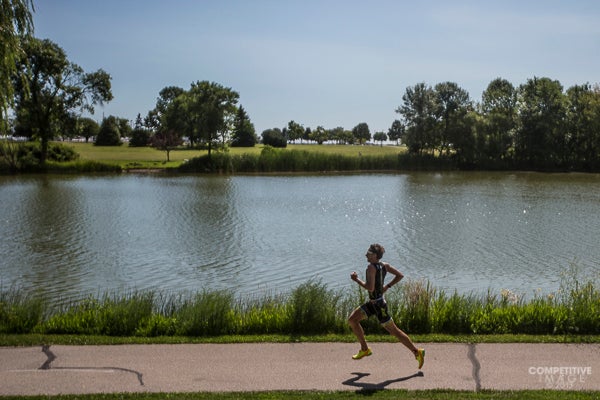Coach’s Note By Lance Watson: Break Through Your Fitness Plateau

Photo: Paul Phillips/Competitive Image
Hard-earned cardiovascular adaptations and muscle memory developed over the course of several seasons can make it easier to regain fitness after a period of downtime, but breaking new ground can be difficult. And during the season, racing week in and week out can also cause fitness to stagnate or even decline.
Physiologically there are three ways to break through a fitness plateau: increase the frequency (how often you train), volume (how much mileage you do) or intensity (how hard you go) of your workouts. It is not about how much you train but, rather, what you do within these sessions that is of greatest significance. Below are three plans, one each for swim, bike and run, to help you boost your form for 2014 and hopefully set a few PRs in the process.
Swim
Because swimming depends so much on technique and skill acquisition, as opposed to brute force, many athletes find that they can easily plateau in the water¾regardless of how much yardage they swim or how hard they work. To tweak your stroke and build swim fitness and speed, consider integrating the below steps into your training plan.
1. Increase your total weekly volume by 10-20 percent over previous seasons. Do so primarily by going to the pool more frequently, but also consider including a few longer sessions.
2. Temporarily cut back on bike and run volume until your body is able to absorb the increased swim yardage.
3. Increase the volume of your drill sets by 20-30 percent over last season, particularly early in the year. Don’t do drills just for the sake of doing them. Perform drills that isolate and develop aspects of your stroke: body rotation, kick, hand entry, recovery, finish.
4. Have a friend or coach tape you while you are swimming. Compare what you see on film to the internal image of what you think you look like¾or how you should look.
5. Join a Masters swim group and have the coach give you stroke feedback, then persevere the right way.
RELATED: Conquer Your Swim Weakness
Bike
Okay, a lot of cycling success has to do with sheer guts, but there’s a lot to be said for a highly structured training program¾as opposed to just pounding out a huge volume of unfocused miles or, as the saying goes, “Racing yourself into form.” For many athletes, weakness in the hills, especially in the spring as strength and power are still developing, can be a persistent issue. Here’s how to get an early-season monkey off your back and break through to a new level on the bike.
1. Increase your base training mileage by 10-20 percent over previous years to build strength over the latter portion of your ride. Build the last half or third of your long rides to 10 beats below lactate threshold.
2. Early in the year, incorporate some overgeared cycling with a cadence around 70 rpm on the flats, 50-60 on the hills, to build strength.
3. If you’re still spending time indoors on the trainer, place an extra block under your front wheel to simulate hill-climbing body angles and muscle stresses.
4. Regularly include 4-6 x 10- to 15-second accelerations in your early-season rides. Begin by accelerating 3 mph above your average cycling pace, and over the course of the set, build to your max speed in a hard gear. This increases power and doesn’t cost much from a recovery standpoint.
RELATED: Becoming An Uberbiker
Run
To be a good triathlete you don’t need to be a good runner. You need to be able to run well off the bike. Many single-sport athletes have taken up triathlon hoping to dominate by virtue of a single strong leg. Unfortunately, these folks quickly learn that the sport is unforgiving of those who fail to take a well-rounded approach. If you have a tough time finding your run legs after riding, try the following sets.
1. Practice transition workouts: Early in the season these sessions can consist of a 20- to 50-minute aerobic run immediately following a two- to three-hour ride. In these runs, incorporate 4-6 x 30-second pick-ups, building to your goal 10km triathlon pace. Take a full recovery after each 30-second effort before beginning the next work interval. Gradually progress to transition runs that include a 10-minute block at your goal 10km triathlon pace after a long ride. This is a good simulation that does not require a lot of recovery.
2. As the season approaches, include transition-specific workouts that allow you to adapt quickly to the stresses of running after riding. One such workout is 2-3 x (5-mile bike/800m run). Complete both the bike and run sets above your goal race pace and allow full active recovery (of easy running or spinning) after each round.
RELATED: 4 Tips For A Running Breakthrough
LifeSport head coach Lance Watson has coached a number of Ironman, Olympic and age-group Champions over the past 25 years. He enjoys coaching athletes of all levels. Join Lance to tackle your first triathlon or perform at a higher level.